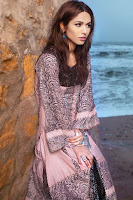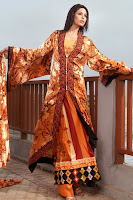July 14, we know, is the Bastille Day – anniversary of the storming of the Bastille prison in Paris that launched the French Revolution in 1789. It is celebrated as the National Day in France. This year, it fell on Thursday and it was marked in Karachi with a day of violence that was exceptional in many ways.
This is not to suggest that the momentary storming of Karachi, so soon after a four-day spell of killings and a vicious siege of entire localities, had any revolutionary stirrings. But I do have an excuse to connect the idea of a revolution with the violent disorder that we have suffered in this country. And Karachi serves as the most disturbing illustration of our deepening social disequilibrium.
Unable to decipher the sense of our various afflictions, ranging from religious militancy to an anarchic law and order situation, many of us have fearfully aspired for some kind of a revolutionary change. Some even tend to romanticise this possibility, as if a violent revolution will be our liberation. In this respect, the French Revolution, also remembered for its ‘reign of terror’, is more frequently invoked. For some political leaders, it is their revolution of choice.
Remember that famous quotation of Mao Zedong? “A revolution is not a dinner party, or writing an essay or painting a picture, or doing embroidery ... A revolution is an insurrection, an act of violence by which one class overthrows another”.
So, is Pakistan ready for a revolution, even though it is saturated with mindless insurrection and violence? Could this revolution be historically as momentous as the French or the Russian or the Chinese revolutions were in launching a new age? Frankly, I do not hear the footsteps of any meaningful social change in Pakistan, given the quality of our leadership and the pathetic inability of our intelligentsia to deal with ideas in a historical context.
For instance, what do people know about the French Revolution and about the significance of its Declaration of the Rights of Man and of the Citizen? Another revolution that is idealised is the Iranian Revolution led by Imam Khomeini, though the mainstream Sunni orthodoxy would loath to look in that direction. Still, the Iranian Revolution, hijacked by the Islamists, is part of living memory. Yet our intellectual appreciation of what happened in Iran is very deficient. Foreign media and scholars remain our interpreters of some major events that have happened in our region, including in Afghanistan and Iran.
The point I am making is that we have somehow not been able to make a serious sociological study of the developing situation in Pakistan. Even if we have some perceptive critics and analysts who have done their research and have thought deeply about the changes that are taking place in our society, the popular media remains incapable of projecting and discussing their thoughts.
However, a situation that may breed revolutionary change is rising like a tidal wave. All the indicators of a pre-revolutionary society are staring us in the face. There is almost no governance and the non-state actors are becoming more and more powerful. Corruption in high places is rampant. Indiscriminate violence shows that the state is unable to protect the life and property of the citizens.
Take, for instance, the events of the Bastille Day in Karachi. The previous night, Sindh’s senior minister Zulfikar Mirza had gone berserk in making televised remarks in a reception. But this was the role that he had played a number of times. His venomous attack on MQM, its leadership and its followers came this time against the backdrop of last week’s disturbances and the recent break in the PPP-MQM coalition.
In any case, as the Mirza diatribe kept pounding on TV screens, the response was almost immediate and awesome. Heavy firing started in many localities in Karachi and the news of deaths, injuries and arson started coming soon after midnight – as the Bastille Day began. By sunrise, trouble had spread to all urban centres in Sindh. Karachi was totally immobilised. A pall of fear hung heavy on the horizon. Shock waves were felt across the country.
Would this not be an intimation of a revolutionary unrest? Well, in the evening the MQM leader told the protesters to return to their homes and suspend their agitation since their indignation over Mirza’s remarks had been registered. In a demonstration of MQM’s hold over its constituency, everything changed and Karachi started to return to what would be called normalcy – to be surely fractured by the next conflagration.
But who should be held responsible for the great damage that Karachi and some other cities of Sindh had to suffer? Indeed, the pain that is inflicted by such protests is never fully grasped or projected in terms of its human dimensions. That we bear this pain so frequently and there is still no political or intellectual leadership to inspire us into any revolutionary action for a defined change is perhaps our great tragedy.
It is easy to see the utter futility of what transpired on Thursday. You may consider the events as the parody of a revolution, except that the bullets, the blood, the pain and the flames were all very real. Faiz wrote that poem about the blood of the oppressed being of no avail and it was inspired by a similar incident in Karachi.
Our ruling politicians, in a similar manner, are presenting a tragic parody of governance. We know that politics is a game of compromise and that politicians are expected to be expedient in their conduct. But our politicians tend to cross all lines to flout moral and even legal commandments. Could you even have imagined that the party of Benazir Bhutto would share power with the Chaudhries of PML-Q?
And while they are so clever and cunning in playing politics, their ability to govern is shamefully flawed. Every day, we have to watch a new blotch of mud on their faces. Do they need more faces just to put up with the rising quantity of mud that is thrown at them? Does it help that so many of our rulers have two faces? One is tempted to suspect that the present political pack is part of some cosmic conspiracy to make Pakistan incapable of working a democracy and also staging a meaningful social revolution.
To conclude, I would urge you to spare some thoughts for an event that occurred on Friday in the fortified streets of Islamabad. Supporters of a PML-N MNA wrested the lawmaker from police custody, when he was being taken to a police station. Some glimpses of the action were shown on news channels. What linkage this act could have with the storming of Bastille more than two hundred years ago?
Copyright TheNews 17.7.2011




































